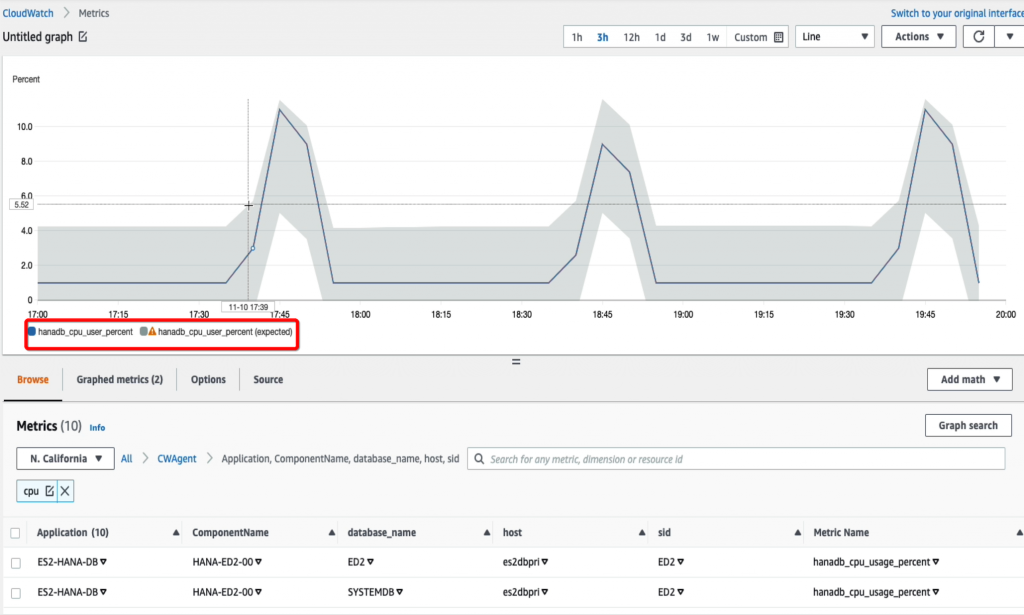AWS for SAP
Category: SAP on AWS
Maintain an SAP landscape inventory with AWS Systems Manager and Amazon Athena
Introduction Effective maintenance and operation of SAP systems rely on access to system information to support decision-making. Inquiries about, for example, SAP kernel version, installed ABAP components, or simply active SAP systems are often part of IT operation activities. Furthermore, these inquiries are typically more elaborate, for example, listing systems matching a particular version of […]
Automating SAP installation with open-source tools
Introduction We’ve already demonstrated in our first blog post how to provision the infrastructure for SAP applications using Terraform, and in our second blog post we added in automation of SAP software installation using Systems Manager. Now it is time to go deeper with open-source common tools like Jenkins and Ansible to have the SAP […]
Set up observability for SAP HANA databases with Amazon CloudWatch Application Insights
Introduction SAP applications support mission-critical business processes, so customers want to be able to identify and resolve issues impacting their SAP HANA databases quickly. However, SAP workloads have unique requirements and consumption patterns, and getting HANA-specific intelligence can be complex. Further, when issues are identified, finding root cause can also be difficult. Since 2019, AWS […]
Licensing options for Microsoft Windows Server/ SQL Server-based SAP workloads on AWS
Introduction: Customers have been running Microsoft Workloads on Amazon Web Services (AWS) for over 12 years, longer than any other cloud provider. AWS has been running SAP workloads since 2008, which is also meaningfully longer than any other cloud provider. Today, more than 5000 active customers are running SAP on AWS, and many of them […]
Introducing the SAP Lens for the AWS Well-Architected Framework
Introduction SAP applications represent the financial system of record and business process backbone for most of the world’s enterprises. Because SAP workloads are both mission-critical and often resource-intensive, architectural decisions can have large impacts. Understandably, customers want to make sure their architecture supports their unique business and technical requirements. AWS has been supporting SAP workloads […]
High availability design and solution for SAP NetWeaver installations with Oracle Data Guard (Fast-Start Failover)
Introduction Many SAP customers are still running their mission-critical SAP workloads on Oracle database with the different combinations of Operating systems (IBM AIX, HP-UX, Red Hat Enterprise Linux / SUSE Linux Enterprise Server) in their on-premises environment. The challenge in their cloud adoption journey is to migrate Oracle based workloads as-is using a “lift and […]
Amazon EC2 M6i instances now available and SAP certified
This post was jointly authored by Steven Jones, General Manager of SAP/VMware at AWS, and Anurag Handa, General Manager of Cloud & Enterprise Solutions Group at Intel Deliver better performance for mission-critical SAP workloads with Amazon EC2 M6i Instances AWS and Intel recently announced the launch of our new Amazon EC2 M6i instances, which are […]
Extract data from SAP ERP and BW with Amazon AppFlow
Introduction At AWS, we commonly hear from customers that they are looking to not only move their SAP systems to the cloud, but transform the way they use data and analytics capabilities within the organisation. Furthermore, they want to combine the SAP data with non-SAP data in a single data and analytics solution on AWS. […]
SAP HANA sizing considerations for secondary instance with reduced memory footprint
Introduction SAP systems that are critical to business continuity require a well designed and tested High Availability and Disaster Recovery (HA/DR) framework to maximise application availability during planned and unplanned outages. SAP HANA is an in-memory database that supports mission critical workloads and is a key component of an SAP system that needs to be […]
Integrating SAP Systems with AWS Services using SAP Business Technology Platform
Introduction While Amazon Web Services (AWS) customers such as Bizzy, Invista, Zalando, and Engie have implemented data and analytics solutions on AWS in support of their SAP workloads, many more are working with AWS to see how they can gain further insights by exploring trends in data. The large amount of data generated by business […]









